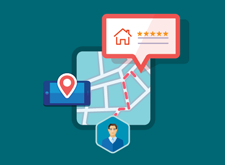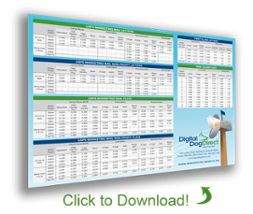 For small businesses, local listing websites and social platforms are very important pieces of an effective online presence. 43% of all Google searches and 50% of all mobile searches are local or location based, meaning a location (city, town, county, as examples) was either coupled with another keyword in the actual search or some sort of geolocation tool within the device was active at the time of the search.
For small businesses, local listing websites and social platforms are very important pieces of an effective online presence. 43% of all Google searches and 50% of all mobile searches are local or location based, meaning a location (city, town, county, as examples) was either coupled with another keyword in the actual search or some sort of geolocation tool within the device was active at the time of the search.
Why is this important? When people are completing location-specific searches, they mean business — literally. They’re not just searching for general information about coffee; they want their iced mocha latte now. Why is this really important? 30% of those searches become immediate conversions and 60% of them are within 1 hour. (Confluentforms.com)
As a local business, you want to grab that low hanging fruit! The most important first step you can take in local listing marketing is to make sure you’ve covered the basics. Here is your checklist:
1. Claim your listings, remove duplicates
Google your business and find out what comes up first. Also check Yelp, Yahoo, and Bing to see where and how you are listed. Next, visit those individual listings and “claim your business” by proving you are the owner (this usually entails an automated phone call to your business and a code entry).
Be thorough with your searches to ensure that there are no duplicate listings. If there are, you should be able to have them merged (find Google+ merge information here). Make sure your business basics are correct.
2. Choose the right category and keywords
Take the time to look through all of the available and relevant options for categories and services before selecting the first ones that come up. Whichever categories you choose should be as accurate and reflective as possible.
Also, write a detailed description about what your business provides. Enter as much information as you can about methods of contact, address, hours, and parking information. All of these pieces of information are what the search engine uses to match a search to your business and rank you appropriately.
3. Get interconnected
Link up your other social platforms and website to each local listing. This will encourage visitors to explore your brand in different ways. If you’ve been putting time into your Instagram account, mention your handle in your description and tell visitors to follow you for updates, coupons, specials, and so on. Leverage multiple marketing tools at once!
4. Inform your audience with photos
The way most consumers judge a business in an instant is by looking at their photos (and reviews — that part is next). The most obvious example is the restaurant business. If there is a hungry family of four leaving soccer practice on a Thursday night, and someone says they want pizza, nothing will grab their attention better than a picture of a hot slice of pepperoni straight out of the brick oven. Boom: table for four, please.
Without photos, on the other hand, your brick and mortar authenticity disintegrates.
User photos are always great to have because they generally reflect the consumer’s enthusiasm and delight with your product. Encourage them! That said, professional shots are within your control and allow you to set the tone of your content and brand. A mix of both is best.
5. Reviews, reviews, reviews
Reviews. We can’t say it enough! While they are not always easy to capture, a good one can go a long way. Encourage your in-store visitors to “share the love” by reviewing you online — but let them know that you only want them to do so if they’re honest. You’ll gain instant brownie points for demonstrating your respect of their opinion and willingness to spread the word.
At this time, be sure to address any unanswered questions or comments (positive and negative) on your listings and stay on top of it as best as you can. This is not always the easy part, but like a good review, a prompt response is as good as gold.




Comments